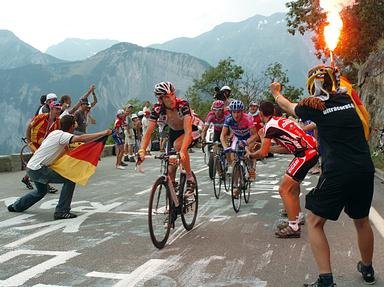Quiz Answer Key and Fun Facts
1. The first six editions of the Tour de France were won by Frenchmen. Then came the smallest countries to have ever celebrated in this event. Luxembourg: What was the name of the winner in 1909?
2. From 1914 to 1918, Europe was the scene of 'The Great War'. Around that tragic piece of history, four Belgian riders won 'La Grande Boucle' seven times in total from 1912 to 1914 and from 1919 to 1923. Who was the first of that quartet?
3. Rodolfo Muller was an Italian who participated in the first Tour. He finished a credible fourth. But it took until 1924 before an Italian claimed the ultimate success. Who was that man?
4. Switzerland was the fifth country to celebrate a Tour winning citizen. Who was victorious in 1950?
5. Going down south to get the sixth nationality, the year was 1959 and a Spaniard reigned supreme. His way of doing it earned him his nickname. What was his real name?
6. Until 1968, all winners bordered France, but then it was two bordercrossings from France to find the next winner. For a few years, Dutch riders had started to perform better and better. It was no surprise that in 1968 this Dutchman created a little sporting history for his country. What was his name?
7. Until the '80s, success in the Tour was a continental European affair. But in the mid-80s, that changed as suddenly a Yank reigned supreme. What was the name of the man who would win this race three times?
8. One year after the first American victory, it was another English speaking rider won the Tour. He came from the Republic of Ireland. What was his name?
9. 1996 was the ninth foreign country (from the French perspective) to win the race. He represented Denmark and was part of a strong German team, as it delivered the runner-up as well. What was the name of the Dane who set his countrymen on fire?
10. Take a map of Europe and color it with the countries that have delivered the winner since 1903. Little by little the blanks disappear. First it was France, then Luxembourg, Belgium, Italy, Spain, the Netherlands. Germany was a blind spot, but then came the year 1997 and it disappeared forever. Who was responsible for that?
Source: Author
jaydel
This quiz was reviewed by FunTrivia editor
Nightmare before going online.
Any errors found in FunTrivia content are routinely corrected through our feedback system.
